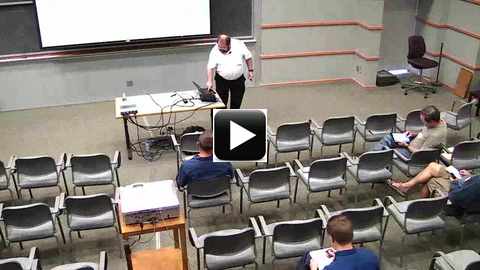Physics of the Bose-Einstein condensation (BEC) is considered to be one of the most fundamental manifestations of Quantum Physics in macroscopic world. Modern optical techniques allow one to realize and investigate both statics and dynamics of the condensates. The concept of BEC is not limited by the ultracold gases. There is a whole class of essentially nonequilibrium physical systems that demonstrate the condensation. For example, exciton-polaritons in semiconductor microcavities can escape in the form of photons. Their equilibrium concentration is negligible; however it can be pumped up to the values sufficient for the condensation, which thus happens in the driven system.
I will propose a theoretical description of BEC in non-Hermitian systems [1]. It turns out that a set of localized one-particle states (condensation centers) can be described by the same equations as coupled anharmonic oscillators. The condensation, i.e. the phase coherence of bosons at different centers, resembles the Insulator to Superfluid transition in Josephson arrays. In driven systems it is crucial to account for the dependence of the decay rate on the symmetry of their wave function due to the interference between the light emitted by different centers.. This dependence causes dissipative coupling between the centers additional to the conventional Josephson coupling. Combination of these couplings with the one-site interaction between the bosons leads to a rich nonlinear dynamics:
(i) The macroscopic number of bosons occupies an excited rather than the ground state.(ii) There can be several stable states and the system can switch between them;
(iii) The time-reversal symmetry as a rule broken.
I will discuss the interpretation of existing experiments [2, 3]. Recent experiments on exciton-polariton condensation in 1D and 2D super-lattices [4, 5] - formation of "driven states of matter" look like the most natural application of this theory.
[1] I. L. Aleiner, B. L. Altshuler, and Y. G. Rubo, Phys. Rev. B 85, 121301(R) (2012).[2] A. P. D. Love et al., Phys. Rev. Lett. 101, 067404 (2008).
[3] D. N. Krizhanovskii et al., Phys. Rev. B 80, 045317 (2009).
[4] C. W. Lai et al., Nature (London) 450, 526 (2007).
[5] N. Y. Kim et al., Nature Phys. 7, 681 (2011).
 Other video options
Other video options